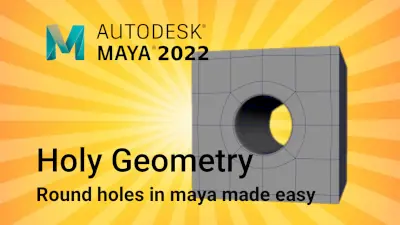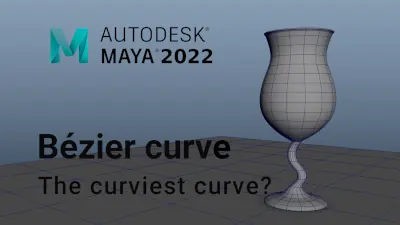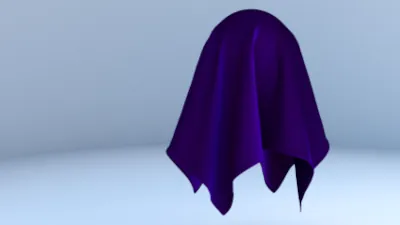Integrating 3D models with photography
Interested in integrating your 3D work with the real world? This might help
#
1
29-09-2007
, 03:22 PM
Subscriber
Join Date: Oct 2005
Join Date: Oct 2005
Location: US of A
Posts: 114
Particle Simulation (Very Technical, Need Help!)
I'm working on a project, a sort of partical simulation. Basically the goal is to have a surface emit particles that float downward toward a sphere that attracts all nearby particles within a certain radius.
That was the easy part, and its all finished.
The task at hand is to be able to change the attributes of the particles once they've entered a certain radius around the sphere. For example, a particle enters the gravitational field of the sphere, and as it does so, it change color from blue to red and begins to emit a soft glow, growing stronger as it nears the sphere.
I've been doing some research and it looks like I'm going to have to do some MEL scripting to set it up correctly, and unfortunately I dont know a damn thing about MEL aside from what i've read today. I'm planning on learning MEL because I'm going to obviously need it to complete my goals, but any help, tips, pointers, or anything that could help would be much appreciated.
Thanks everyone!!!
Death is certain, Life is not.
#
2
30-09-2007
, 07:00 AM
Code:
vector $vWPos = worldPosition; vector $vSPos = <<pSphere1.translateX, pSphere1.translateY, pSphere1.translateZ>>; float $fDistance = mag($vWPos - $vSPos); float $fEffect = 0; if($fDistance < effectRadius); $fEffect = 1 - linstep(0, effectRadius, $fDistance); rgbPP = <<$fEffect, 0, 1 - $fEffect>>;
#
3
30-09-2007
, 02:18 PM
Subscriber
Join Date: Oct 2005
Join Date: Oct 2005
Location: US of A
Posts: 114
Death is certain, Life is not.
#
4
18-10-2007
, 07:07 PM
Subscriber
Join Date: Oct 2005
Join Date: Oct 2005
Location: US of A
Posts: 114
However, I've been playing around with the expressions and I'm trying to get the particles to die now once they are inside the target sphere, and well, its not working the way I would like.
When I try it one way, the particles die before moving, and then the other way nothing happens. Its almost as if the particles have a world position of 0,0,0 when they are born.
Any thoughts?
Thanks again all!
Death is certain, Life is not.
#
5
18-10-2007
, 07:21 PM
Subscriber
Join Date: Oct 2005
Join Date: Oct 2005
Location: US of A
Posts: 114

Death is certain, Life is not.
#
6
20-10-2007
, 03:15 PM
Subscriber
Join Date: Oct 2005
Join Date: Oct 2005
Location: US of A
Posts: 114
To recap, there is a plane emitting particles downward toward the origin, where a sphere rests. This sphere attracts all nearby particles, and the particles that get close change color from blue to red.
My next goal is to make it so the surface of the sphere changes color as a particle nears it. I dont mean the entire sphere, I just mean a small localized region that is near the particle.
For example, I have a green sphere, and as a particle approaches it, I want the point on the surface of the sphere to glow orange gradually as the particle moves closer to the surface of the sphere.
Thanks all!
Death is certain, Life is not.
Posting Rules Forum Rules
Similar Threads
Dynamics: A few questions...
by xgabrielx in forum Dynamics & Special Effects replies 1 on 08-01-2015
particle direction with animated characters
by Razor Blade in forum Dynamics & Special Effects replies 0 on 19-05-2012
creating a particle grid on plane or otherway round.
by bendingiscool in forum Programming replies 3 on 19-05-2008
how to emit only one particle?
by fxfreak1 in forum Dynamics & Special Effects replies 1 on 22-06-2006
Texture or material on particles?
by dax3d in forum Dynamics & Special Effects replies 6 on 24-04-2003
Topics
Free Courses
Full Courses
VFX News
How computer animation was used 30 years ago to make a Roger Rabbit short
On 2022-07-18 14:30:13
Sneak peek at Houdini 19.5
On 2022-07-18 14:17:59
VFX Breakdown The Man Who Fell To Earth
On 2022-07-15 13:14:36
Resident Evil - Teaser Trailer
On 2022-05-13 13:52:25
New cloud modeling nodes for Bifrost
On 2022-05-02 20:24:13
MPC Showreel 2022
On 2022-04-13 16:02:13








